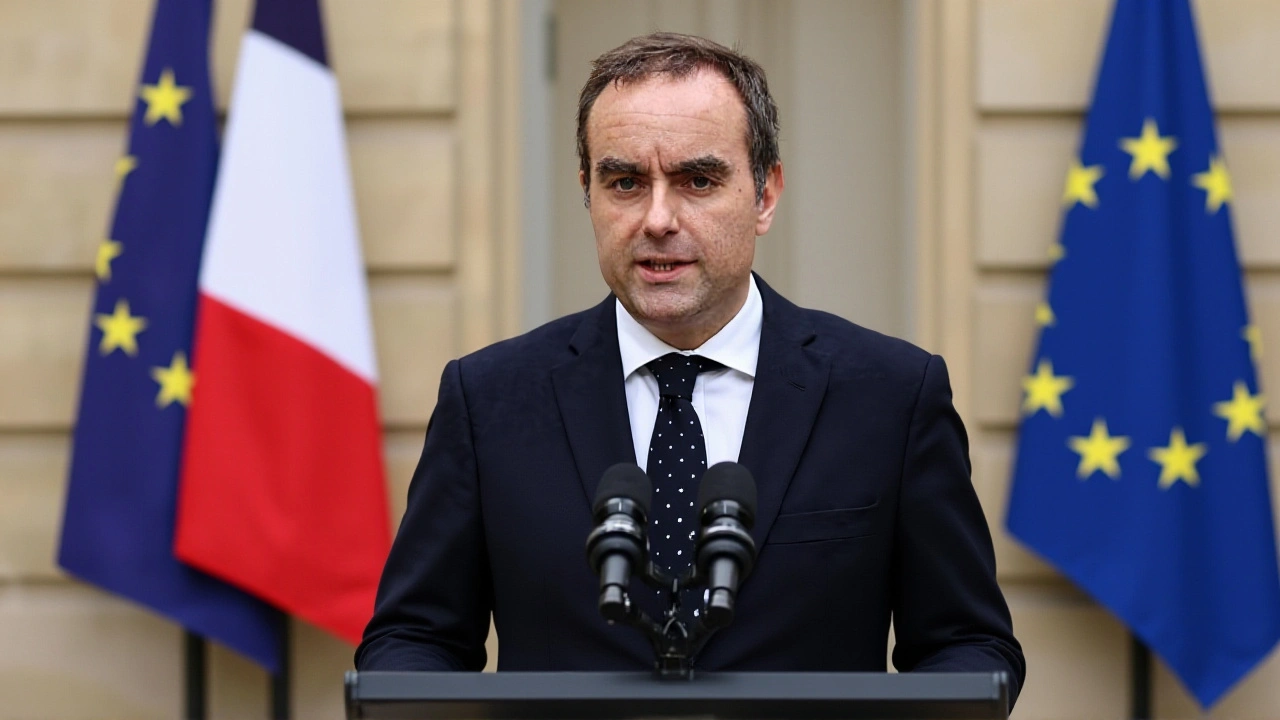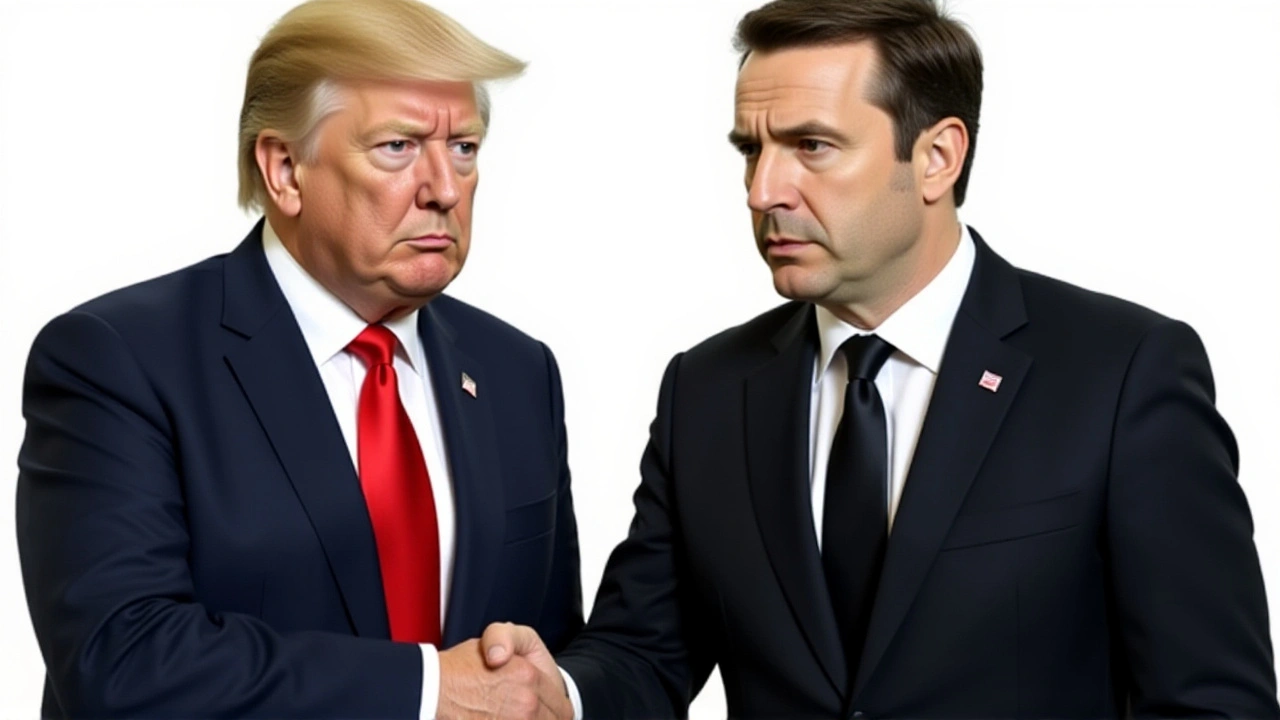When Donald J. Trump, 45th and 47th President of the United States and Emmanuel Macron, President of the French Republic clasped hands at the Sharm El Sheikh Summit for Peace in the Middle EastSharm El Sheikh on 13 October 2025, the world watched a 27‑second tableau that felt more like an arm‑wrestling bout than diplomacy. The photo‑op, co‑chaired by the U.S. leader and Egypt’s Abdel Fattah el‑Sisi, was meant to signal unity against the ongoing Israel‑Hamas war, yet the prolonged grip quickly became the headline.
Background: A Summit Amid a Prolonged Conflict
The Gaza conflict, which erupted on 7 October 2023, entered its 25th month as world leaders gathered in the Red Sea resort town of Sharm El Sheikh, Egypt. More than 20 heads of state arrived hoping to push a ceasefire and pave the way for reconstruction. The summit’s official banner read “Peace in the Middle East” in gleaming gold, framed by the flags of the United Nations, the United States, France, and Egypt.
Trump, who returned to the Oval Office for a second stint in 2025, positioned himself as the chief negotiator, repeatedly declaring that “the United States is making peace.” Macron, a long‑time advocate for a two‑state solution, arrived with a delegation that included France’s foreign minister and senior NATO officials. The two leaders had a reputation for an “awkward handshake” dating back to a 2019 G20 meeting, and many observers wondered whether history would repeat itself.
The Handshake: A 27‑Second Drama
Photographer Yoan Valat captured the moment for Reuters. As the cameras rolled, Trump and Macron locked palms, their arms bobbing slightly with each shift of weight. The grip lasted roughly 27‑30 seconds, according to multiple outlets, and included a series of subtle tugs that drew gasps from the audience.
A professional lip‑reader, Nicola Hickling, analyzed the muted exchange. She reported that Trump began with a terse “Nice to see you, so you agreed?” followed by “Is it genuine?” Macron’s reply, though obscured, seemed to be a brief “Of course.” The crescendo came when Trump allegedly said, “Okay, so now I want to know why. you hurt me. I already know,” before concluding, “I am making peace.”
While the exact words remain unverified, the visual of two world leaders locked in a prolonged handshake sparked a frenzy of memes, jokes, and speculation about the state of U.S.–French relations.
Social Media Reaction: From Memes to Mistrust
- One X user wrote, “Trump defeated Macron in a political arm‑wrestling. I knew he could take Macron, that’s child’s play.”
- Another commented, “Is this a handshake or a wrestling match? #TrumpMacronShowdown.”
- Several analysts posted video breakdowns, pointing out the exact moments the grip shifted, turning the footage into a viral “slow‑motion” study.
Major news outlets, from The Mirror to Hindustan Times, ran pieces on the episode, each offering a slightly different take on the location (some mistakenly citing Cairo) but all agreeing on the handshake’s length and theatrical feel.
Diplomatic Context: Tensions Beyond the Red Carpet
The handshake did not occur in a vacuum. Over the past year, Trump and Macron have clashed on NATO funding, where Trump repeatedly demanded that European allies increase defense spending, while Macron warned that a unilateral approach could destabilize the alliance. Both leaders also differ on how to press Israel for a ceasefire, with France advocating a more balanced approach that includes humanitarian corridors.
During the summit, el‑Sisi pressed both Presidents to focus on the humanitarian crisis in Gaza. In a closed‑door session, Trump reportedly emphasized his administration’s “peace‑building” agenda, while Macron urged the U.N. to enforce a ceasefire before any political settlement. The hand‑to‑hand moment, therefore, became an inadvertent symbol of those deeper policy rifts.

What the Handshake Means for Gaza Talks
While a handshake rarely decides policy, the optics matter. Critics argue that the prolonged grip signaled a lack of coordination, potentially emboldening hardliners in both Washington and Paris. Supporters counter that the public display of unity—even if awkward—kept the spotlight on the summit’s main goal: a ceasefire.
In the days following the event, the United Nations reported a modest de‑escalation in artillery fire along Gaza’s northern border, attributing it partly to renewed diplomatic pressure from the summit participants. Whether this can be linked directly to the handshake is debatable, but the episode certainly kept peace talks on the global agenda.
Looking Ahead: Future Interactions and Possible Outcomes
Both leaders have pledged to reconvene later in the year, either in Paris or Washington, to fine‑tune a ceasefire framework. The next summit is expected to include a broader coalition of Arab states, potentially shifting the power dynamics that have long hampered negotiations.
If the handshake was a metaphor for the underlying tension, the question remains: can the two presidents convert that tension into action? Analysts from the Brookings Institution suggest that the very public nature of their disagreement might actually force a more transparent negotiation process, which could benefit civilian aid deliveries.
Key Facts
- Date of handshake: 13 October 2025, approx. 20:19 UTC
- Donald J. Trump (U.S. President) and Emmanuel Macron (French President)
Frequently Asked Questions
What exactly did Trump say to Macron during the handshake?
According to lip‑reader Nicola Hickling, Trump asked “Nice to see you, so you agreed?” then pressed, “Is it genuine?” before stating, “You hurt me. I already know,” and finally declaring, “I am making peace.” The exact wording can’t be confirmed without audio, but these phrases were captured on video.
Why did the handshake last so long?
Both leaders have a history of extended handshakes used to signal strength. In this case, the prolonged grip may have been an attempt to project unity, but it also reflected underlying tension, turning a routine photo‑op into a dramatic showcase.
How did the handshake impact the Gaza peace negotiations?
While the handshake itself didn’t alter policy, the media frenzy kept the summit in the global spotlight, putting pressure on participants to produce tangible ceasefire measures. A modest drop in artillery fire was reported shortly after, suggesting diplomatic momentum.
What were the main points of disagreement between Trump and Macron?
Trump has pushed for higher NATO contributions and a more assertive stance toward Israel, whereas Macron favors a balanced approach that includes humanitarian corridors and a firm push for a ceasefire before any political settlement.
Will there be a follow‑up summit after this event?
Both presidents have signaled intent to meet again later in 2025, likely alternating between Paris and Washington, with the aim of drafting a concrete ceasefire framework that includes broader Arab participation.


When world leaders lock hands for a diplomatic theater, the optics become the real battlefield.
The 27‑second grip between Trump and Macron was less a greeting and more a kinetic exchange of geopolitical posturing.
Analysts immediately parsed the micro‑movements for latent power signals, citing body‑language theory and alliance elasticity metrics.
The prolonged clasp amplified the existing NATO funding frictions, turning a simple handshake into a quantifiable stress test for the transatlantic bond.
Observers noted that Trump's grip intensity oscillated in a pattern reminiscent of a push‑pull algorithm, while Macron's response cadence aligned with a defensive “hold‑steady” protocol.
In the lexicon of diplomatic signaling, such a durational handshake can be modeled as a high‑frequency trade‑off pulse, indicating willingness to engage but also underlying mistrust.
The media, of course, reduced the nuance to meme‑format comedy, which unfortunately obscures the substantive policy divergences that were on display.
Behind the theatrics, both leaders were likely negotiating leverage points concerning Gaza ceasefire timelines and the strategic allocation of U.S. defense spending.
The Egyptian host, el‑Sisi, attempted to re‑frame the moment as a unity gesture, yet the visual data suggests a latent contest for narrative dominance.
Strategists argue that the handshake’s length could be interpreted as an implicit acknowledgment of the “hardball” approach each side is prepared to take.
Moreover, the audience’s gasps and subsequent viral slow‑motion analyses functioned as a feedback loop, reinforcing both leaders’ domestic political narratives.
From a realist perspective, the grip was a zero‑sum signaling maneuver, where each extra second cost the opponent a fraction of diplomatic capital.
Conversely, liberal theorists might claim that even this awkward embrace signals a baseline willingness to cooperate, a prerequisite for any substantive accord.
The ultimate test will be whether the symbolic hand‑to‑hand contact translates into concrete mechanisms for humanitarian corridors and ceasefire enforcement.
Until then, the handshake remains a case study in how performative diplomacy can both illuminate and obfuscate the real work happening behind closed doors.
i cant believe they actually spent that long on a handshake its like they were trying to lift each other up but also proving how stuck they are in old habits lol
The handshake was clearly a staged power play. Both presidents used the grip to broadcast resolve while secretly measuring each other's patience. Their subtle shifts in pressure hinted at underlying negotiations about defense budgets and the Gaza ceasefire. In short, the drama was as much about optics as it was about policy.
Such a public display of solidarity, however clumsy, reminds us that leaders must sometimes resort to theater to convey a message of unity. When the world watches, even a handshake can become a moral statement about commitment to peace. It forces us to consider whether symbolic gestures can inspire real humanitarian action.
While the theatrics were entertaining, the underlying power dynamics were unmistakable. The prolonged grip was a deliberate assertion of dominance, not a simple greeting. This move exposed the fragility of the transatlantic alliance at a time when coordinated action is crucial.
Everyone sees a handshake, but the real story is that both leaders are puppets of a shadowy elite pulling the strings behind the summit. The 27‑second duration was likely dictated by hidden agendas to keep the public distracted while covert deals are sealed.
Honestly, it was kind of cool to see two big‑shot politicians actually lock eyes and try to make something happen. Even if it looked awkward, at least they were there, trying to push for a ceasefire.
Right? It was like watching a sitcom where the punchline is an international crisis. The whole thing was so over‑the‑top that you half‑expected a laugh track to play.
Great effort from both sides, hoping it translates into real progress 🙂
Indeed, the symbolic nature of the handshake should be complemented by substantive diplomatic initiatives. A coordinated approach, underscored by mutual respect, will be essential in achieving a durable ceasefire.
The handshake was oddly theatrical.
Honestly, this was just a meme‑factory waiting to happen 😂. If a handshake can dominate headlines, imagine what real policy could do.
People get distracted by the spectacle and forget the real issues. The ceasefire talks need concrete steps not just photo‑ops.
It is evident that such performative diplomacy is a detriment to genuine statecraft. Emphasizing theatrics over policy undermines the gravitas required for effective international negotiations.
From a strategic communications standpoint, the extended handshake serves as a high‑visibility signal, albeit with limited substantive impact on the operational framework for peace.